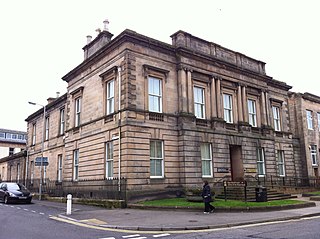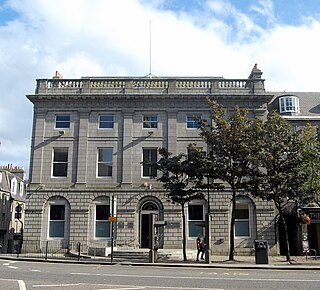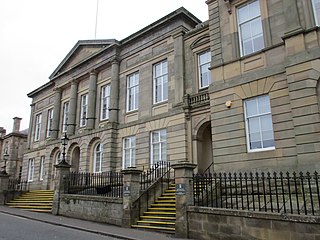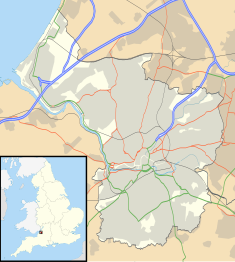
The former U.S. Post Office in Canandaigua, New York, is located on North Main Street. It is a Classical Revival granite structure built in 1910 and expanded in 1938. It was listed on the National Register of Historic Places both as a contributing property to the Canandaigua Historic District in 1984 and individually in 1988, as part of a Multiple Property Submission of over 200 post offices all over the state.

The James A. Redden Federal Courthouse, formerly the United States Post Office and Courthouse, is a federal courthouse located in Medford, Jackson County, Oregon, United States. Completed in 1916 under the supervision of architect Oscar Wenderoth, it houses the United States District Court for the District of Oregon. A substantial extension was completed in 1940, under the supervision of architect, Louis A. Simon. In September 1996, the United States Senate enacted a bill introduced by Oregon Senator Mark Hatfield to rename the building for long-serving District Court judge James A. Redden.

County Hall is a historic former courthouse in Cuckoo Lane in Coventry's Cathedral Quarter. It is a Grade II* listed building.

Helston Guildhall, also known as Helston Town Hall, is a municipal building in Church Street, Helston, Cornwall, England. The structure, which is the meeting place of Helston Town Council, is a Grade II* listed building.

St Ives Guildhall is a municipal structure in Street An Pol, St Ives, Cornwall, England. The structure, which is the meeting place of St Ives Town Council, is a locally listed heritage asset.

Chipping Norton Town Hall is a municipal building in the Market Place, Chipping Norton, Oxfordshire, England. The building, which is used as an events venue, is a Grade II* listed building.

The Town House is a municipal building in Union Street in Yeovil, Somerset, England. The building, which is the meeting place of Yeovil Town Council, is a Grade II listed building.

Tenby Town Hall is a municipal building in the High Street, Tenby, Pembrokeshire, Wales. The structure, which is used as an events venue, is a Grade II listed building.

Crickhowell Market Hall, formerly Crickhowell Town Hall, is a municipal building in the High Street, Crickhowell, Powys, Wales. The structure, which accommodates market stalls on the ground floor and a café on the first floor, is a Grade II* listed building.

Elgin Sheriff Court is a municipal structure in the High Street, Elgin, Moray, Scotland. The structure, which was the headquarters of Morayshire County Council and remains in use as a courthouse, is a Category B listed building.

Paisley Sheriff Court is a municipal structure in St James Street, Paisley, Renfrewshire, Scotland. The complex, which was the headquarters of Renfrewshire County Council and is currently used as a courthouse, is a Category A listed building.

Dumbarton Sheriff Court is a judicial structure in Church Street, Dumbarton, West Dunbartonshire, Scotland. The complex, which was the headquarters of Dunbartonshire County Council and is currently used as a courthouse, is a Category B listed building.

The Justiciary Building is a judicial structure in the Lawnmarket in Edinburgh, Scotland. The structure, which operates in conjunction with similar facilities in Glasgow and Aberdeen, is dedicated for the use of the High Court of Justiciary, which is the supreme criminal court in Scotland. It is a Category B listed building.

The Aberdeen Sheriff Court Annex and High Court of Justiciary, also known as Mercatgate, is a judicial building in Castle Street, Aberdeen, Scotland. The building, which operates in conjunction with similar facilities in Edinburgh and Glasgow, is provided for the use of the High Court of Justiciary, which is the supreme criminal court in Scotland. It is a Category A listed building.

Hamilton Sheriff Court is a judicial building in Almada Street, Hamilton, South Lanarkshire, Scotland. The building, which continues to serve as the local courthouse, is a Category A listed building.

Lanark Sheriff Court is a judicial building in Hope Street, Lanark, South Lanarkshire, Scotland. The building, which continues to serve as the local courthouse, is a Category B listed building.

York Crown Court is a Crown Court venue which deals with criminal cases at York Castle in York, England. It is a Grade I listed building.

One Hans Crescent, formerly the Hans Crescent Hotel and then Knightsbridge Crown Court, is an apartment block, which previously served as a hotel and, later as a crown court, in Hans Crescent in Knightsbridge, London, England.

Burnley Law Courts is a Crown Court venue, which deals with criminal cases, and a County Court venue, which deals with civil cases, in Hammerton Street, Burnley, England.

Lostwithiel Guildhall is a municipal building in Fore Street in Lostwithiel, Cornwall, England. The structure, which currently accommodates the local museum, is a Grade II listed building.






















